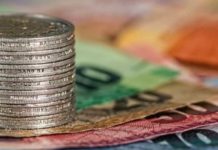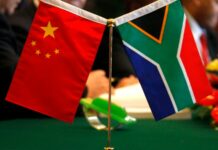
[miningmx.com] — ENERGY Minister Dipuo Peters last week raised hopes with her statement that a new electricity pricing system was being considered.
It has become increasingly evident that the price increases introduced by Eskom over the past three years have started to disturb the delicate balance in the highly regulated industry, leading to significant players no longer believing that it makes sense to keep projects in South Africa going.
According to the prevailing pricing policy, electricity prices have to include provision for the replacement costs of the assets used in electricity supply – in other words power stations, the transmission network and the distribution grid.
In effect this means that electricity consumers have to pay for Eskom’s building programme, which includes two enormous coal-fired power stations (Medupi and Kusile), which will cost more than R10bn a year for the next six years. That is, apart from any plans to build nuclear power stations.
For three consecutive years Eskom’s wholesale electricity tariffs have risen more than 25% a year. In the six months to end-September, the wholesale price was 55.3c per kilowatt hour, while its operating costs were 38.2c per kilowatt hour.
In the same six months, Eskom spent R30.5bn on capital projects.
It seems that Eskom is now financing 80% of the money it requires for its expansion projects from electricity tariffs – in other words, with internal cash flow rather than debt.
In 2008, before the onset of the electricity crisis, Eskom’s wholesale price was between 22c and 25c per kilowatt hour. In recent months, the energy-intensive consumer group has made it clear that this is not sustainable.
In response to questions from David Ross, the DA’s shadow energy minister, Peters said the current pricing policy stipulates that tariffs have to cover the marginal costs of Eskom’s assets within five years.
The valuation of the assets on the basis of modern equivalent assets could result in electricity tariffs covering the marginal of the assets well withing the five-year timespan, she said. It could be argued that this approach might “inflate’ tariffs to fund new capital investments.
“We are now considering an approach that will delay tariff increases and allow a longer period for a return on Eskom’s assets,’ Peters said in reply to Ross’s questions.
LONG-TERM DEBT
In essence what this amounts to is that Eskom’s projects will probably be financed with long-term debt rather than through tariff increases.
The debt will have to consist of comprehensive financial agreements extending over longer payback periods. Repayments will have to start only when the projects start producing (generating electricity) and generating income for Eskom.
Electricity infrastructure projects offer low risk – such debt can be incurred at affordable rates.
The current system of financing essentially means that electricity consumers are expected to pay for electricity that will be generated years from now. We have reached the stage where it can start harming the economy to a great extent.
The price of electricity inevitably has a crucial effect on the profitability of the country’s manufacturing sector.
The Intensive Energy Consumer Group, consisting of the largest companies in the mining and manufacturing industries, recently issued serious warnings about this, predicting that the country has reached a dangerous tipping point where we are about to wipe out the profitability of large energy consumers.
When this point has been passed – in other words, when the price of electricity rises too sharply and too much – demand for electricity will fall as these large consumers will shut down electricity-hungry plants.
This will in turn cause Eskom’s income to drop, forcing the utility to hike electricity rates further to cover its operating costs.
That’s the skyrocketing price scenario, says Mike Rossouw, an executive director at Xstrata in SA, and spokesman for the Intensive Energy Consumer Group.
It’s interesting that Eskom’s electricity sales in the six months to end-September rose 0.9% compared with 3.3% in the corresponding six months in 2010. This figure also agrees with disappointing growth numbers in the manufacturing sector for the past three quarters.
Rossouw points out that the country’s electricity policy contains a range of built-in subsidies and taxes.
Subsidisation exists between large consumers and small consumers because the demand from small consumers, like households, is insufficient to cover the cost of supply, he said. Levies and taxes currently amount to about 19% of the price that large consumers pay for electricity.
A balance will have to be found. There’s no easy solution because, on the one hand, Eskom needs adequate funding to proceed with its construction programme. If the pendulum swings too much in the opposite direction, Eskom’s credit rating will be negatively affected, and this will in turn push up its funding expenses.
It’s probably also time to ask what sense there is in making Eskom pay tax and return dividends to the state, said Rossouw.
But Eskom will also need to increase its own efficiency. Its staff costs, the cost of its coal purchases and the management of its coal stocks, as well as its maintenance costs all need to be efficiently managed to keep electricity competitive.
After long-term debt, the next keyword in a formula for more efficient electricity is probably competition. In other words, private power producers.
– Sake24











